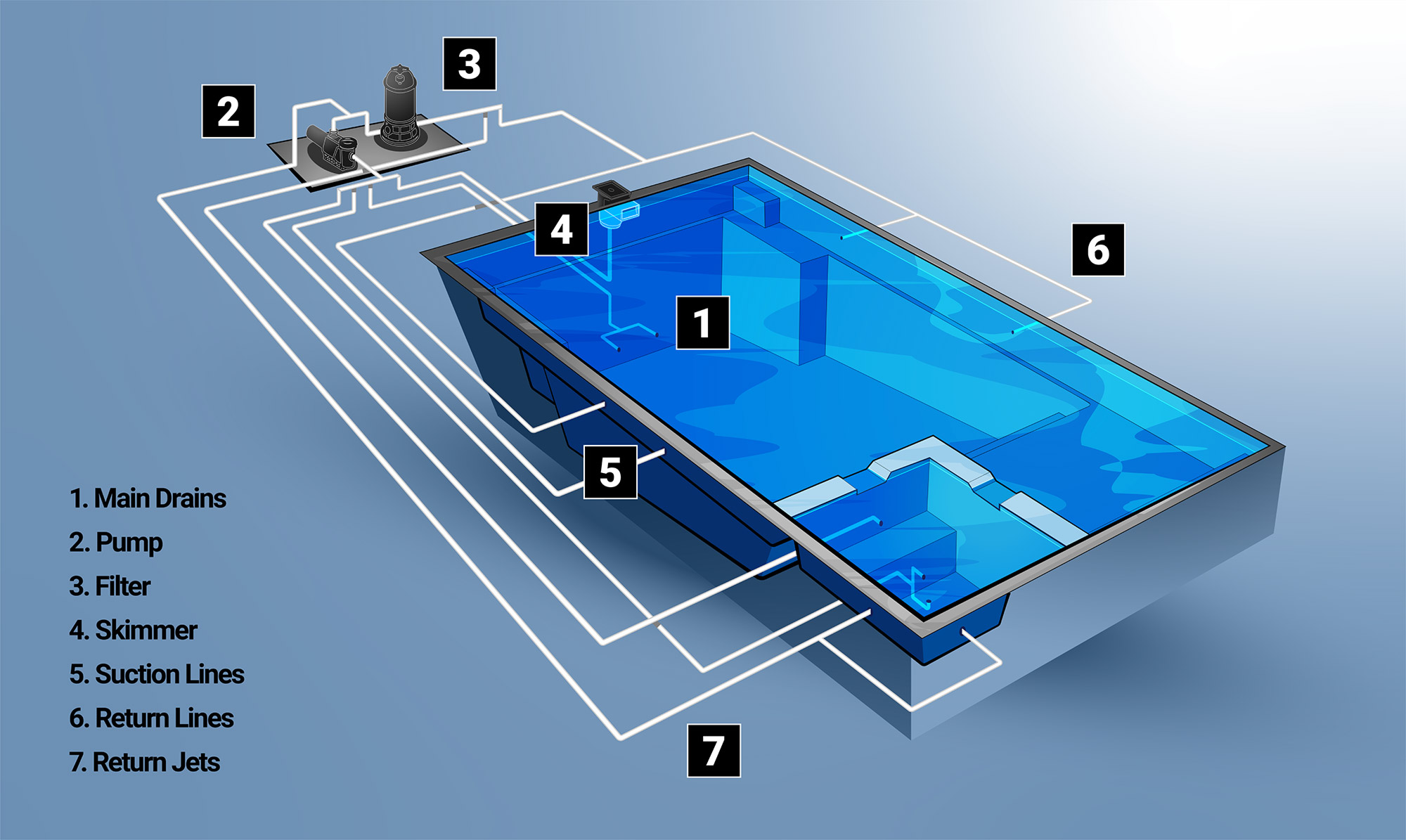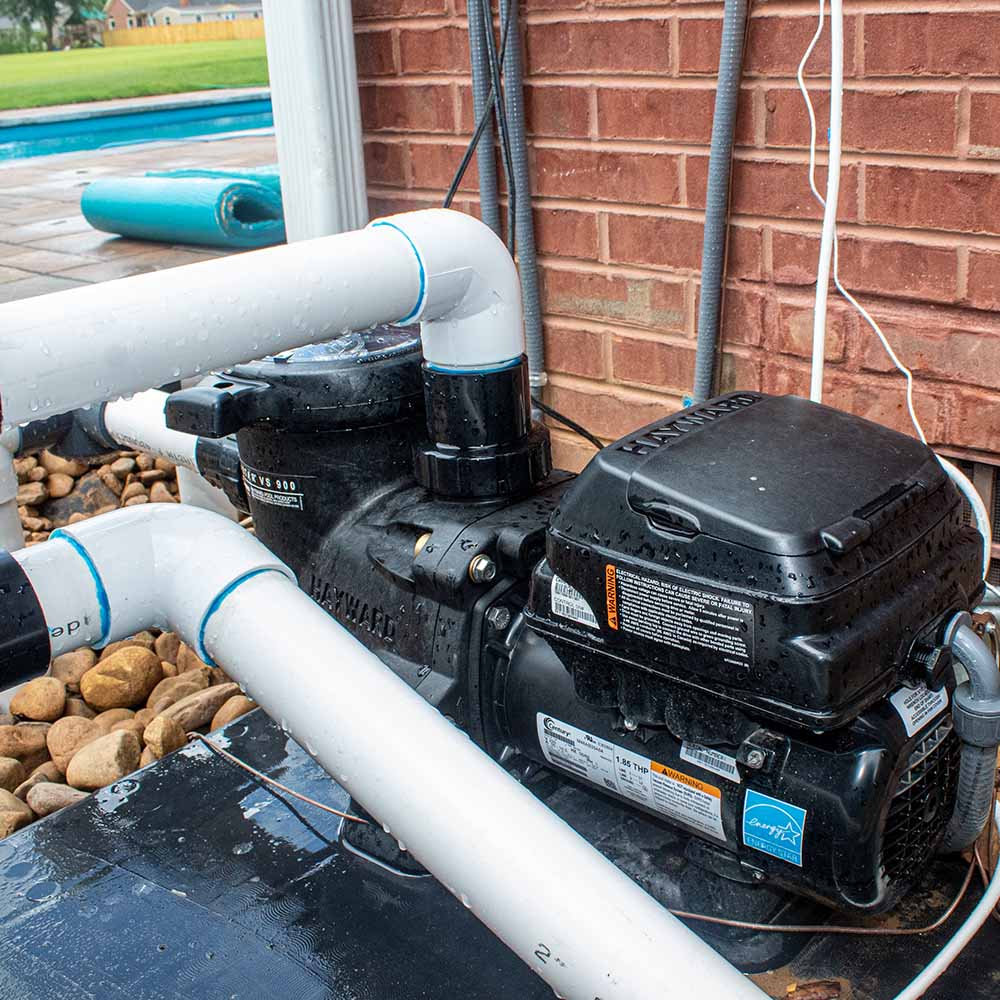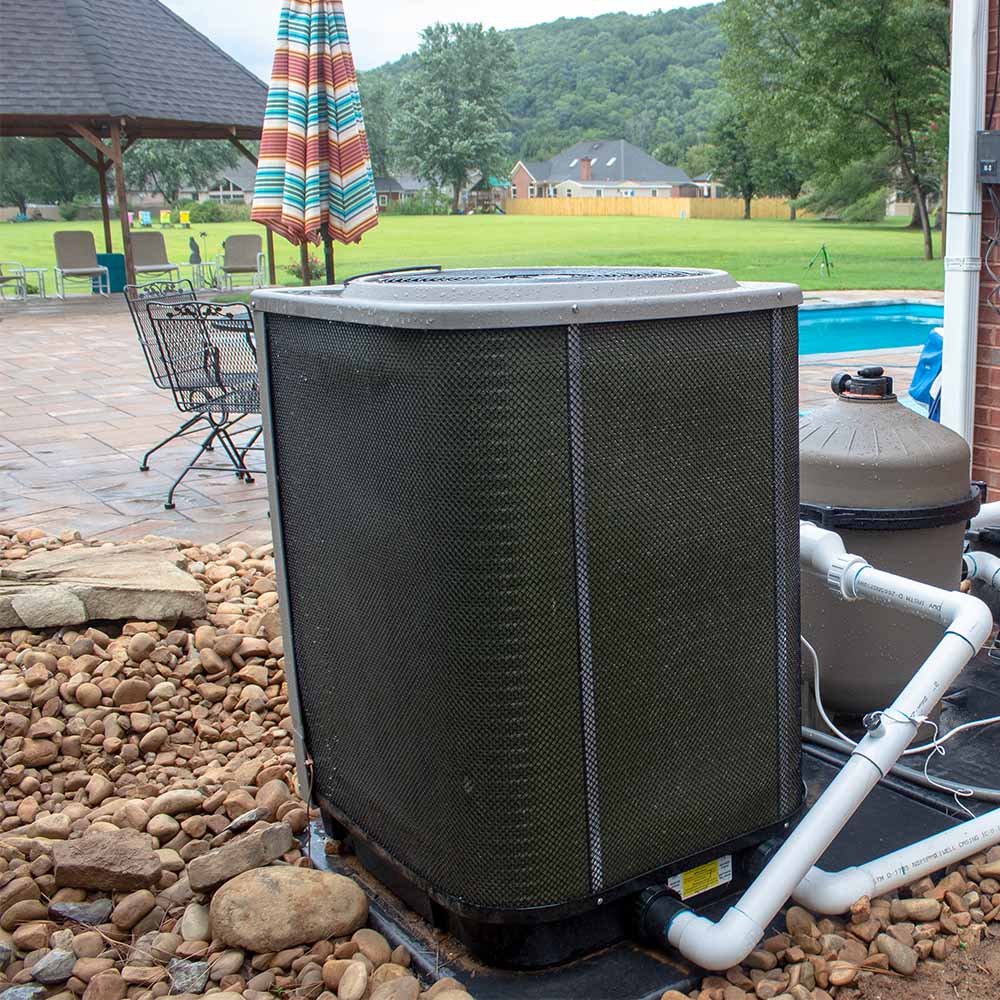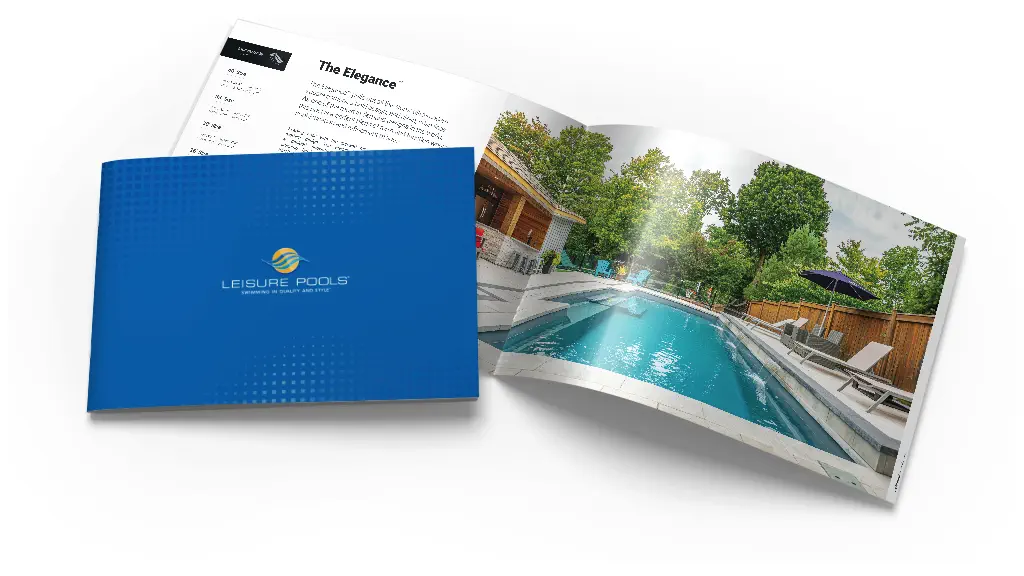
Putting the Fun in the Fundamentals of Pool Care: Pool Care and Maintenance Made Easy

A rudimentary understanding of your swimming pool, its parts, and how to take care of it.
You have a fabulous backyard pool and are undoubtedly enjoying countless hours of fun in and around it as you create one-of-a-kind memories with friends and family. You definitely know how to use your pool, but do you know how to clean and maintain it? In order to squeeze the most fun out of your pool, it’s a good idea to understand the basic elements of the swimming pool and the fundamentals of its care and maintenance. Once you have a basic understanding of these guidelines and principles, your pool should serve you well for years to come.
Just like your car, your appliances, your home and even your health, your swimming pool needs routine maintenance and upkeep. Your swimming pool is more than a hole in the ground filled with water. Once you grasp the key elements of caring for it, you will be in a better position to deal with any issues or problems that rise to the surface and feel confidently prepared to tackle them in no time.
Understanding the Primary Elements of Your Pool
When you first got a car, you had to learn where the steering wheel, brake pedal, accelerator, mirrors, and, yes, even where the radio controls were. That’s basic stuff. If you didn’t grasp the layout of those you were probably better off taking public transportation or just walking.
Same thing goes for your swimming pool. You will be far better prepared for dealing with maintenance issues if you simply know what its basic parts are….aside from the water, that is! You have probably seen these parts before but may not know what they are called. So, put your swimming cap on and settle in for a pretty elementary discussion on what these pieces are and do. Once you know what these are, we will prepare you for some simple cleaning and maintenance tasks.
The key players in your swimming pool
Here is a list of the main components of the equipment in your pool. These are the stars of the show that help keep things running smoothly.
- Main drain
- Pump
- Filter
- Skimmer
- Suction lines
- Return lines
- Return jets
- Sump pump tube and sump pump
For the most part, the mere presence of the words themselves should tell you what these parts are. But we will dive in a bit deeper and give you more of a working knowledge so you can at least appear fancy to your friends.
What is the main drain? Usually located at the deepest point in the pool, the main drain is used to lower the water level. However, it is also designed to circulate water from the bottom of the pool. The main drain draws the water from the swimming pool and transmits it to the pump and filter. While most pools only have one main drain, some may have many main drains.
What is the pump? Think about it this way. You have a heart and circulatory system. Well, so does your swimming pool…in a way. Consider the pump as the heart of your swimming pool. It works rhythmically to pull water from the pool into the skimmer and main drain and then pushing it through the filter and back through the main returns. Three parts comprise the pump: the motor, impeller, and hair/lint trap.

What is the filter? If you want to keep your swimming pool clean, you have to have a filter. The filter does most of the heavy lifting in terms of cleaning and clarifying. It has to be in proper working order so it can effectively do its job. It must suction well and be properly sized for your pool.
What is the skimmer? Pool skimmers draw water from the surface of the pool and suck it into the filtration system, capturing debris before it sinks to the bottoms of the pool. The skimmer has an important job keeping the surface of the pool water clean from debris such as insects, leaves, pollen, etc. The skimmer is constantly at work, pulling in the water and debris from the surface which then proceeds through a pivoting flap known as a weir. Once all of the junk passes through the weir, it accumulates in a basket. This process remains in motion until the pump is turned off. Once the pump is turned off, the skimmer basket holds the debris, preventing it from making its way back into the pool. The skimmer basket should be routinely emptied so the pool water can freely flow and enjoy maximum filtering.

What are suction lines? Hooked up directly to the pump, these direct the water from the pump into the pool filter. The suction lines are usually made of PVC.
What are return lines? These are the opposite of suction lines. Also made of PVC, they transport the pool water from the filter to the return jet.
What are return jets? No, these do not refer to your flight back from your beach vacation. Return jets are what propel the pool water back into the pool once the filtered water passes through the return lines.
What is a sump pump tube and a sump pump? Consider this a form of insurance for your swimming pool. This is a tube that is installed at the deepest end of the pool. They run vertically from the deck of the pool to the bottom of the pool floor. This tube is important because typically after an in ground pool is installed, there will come a time when the ground water rises to a level higher than the bottom of the pool. When the water rises, the swimming pool becomes buoyant. The sump pump tube allows a way for this water to pump out. A sump pump tube, along with a sump pump, will help to control water around a swimming pool, which can be the result of seasonal precipitation, high ground water levels in your pool, floods, and snow melt. Without a method to control the water, as with a sump pump tube and sump pump, you risk damage not only to your pool but also to your backyard.
Just like people, swimming pools have different shapes and styles, but they basically operate from the same internal framework. And if you want to enhance your swimming pool, you can invest in some add-on features that will take your pool to the next level, such as a heat pump…
Considering a Heat Pump? Essentials You Need to Know
While they may have a higher price point than water heaters, over time they prove their worth in efficiency, most notably in warmer climates.
How does a heat pump work?
Heat pumps transfer heat from the outside air into the pool. This is especially attractive for swimming pools located in warmer climates where the air tends to stay warm throughout the year…above 40 or 50 degrees. Heat pumps also maintain a steady temperature in the pool, which is great if you intend to use your pool on a regular basis. And, because they work with the ambient air temperature as opposed to the flow of gas fuel, heat pump operating costs tend to be lower than a standard gas heater. Fair warning, however: if you live in an area where the outdoor temperatures routinely fall below 50 degrees, you might want to reconsider the heat pump option, as they are not as efficient at this level.

Now that You have the Parts in Order, It’s Time to Clean and Maintain Them
It’s natural to feel overwhelmed at the thought of cleaning and maintaining your backyard swimming pool, but we are here to put your mind at ease. It’s not that difficult, and when done properly and routinely, you will have more time to kick back, relax, and enjoy your pool the way it was intended for you to enjoy it.
While we do recommend using a pool care cleaning service, there are some tasks you can do between services that will keep your pool in tip top shape.
Here are a few simple things you can do to maintain the pool yourself to keep it looking fantastic between your scheduled service visits. Stick to these tips and your pool will be the talk of the town.
- Don’t skimp on the skimmer. Use a skimmer to removes all of the unwanted debris (as mentioned earlier, this include bugs, leaves, pollen and more) from the surface of the water. Be sure to skim the pool daily. Otherwise, the floor of your swimming pool will become a popular gathering spot for all of this undesired debris.
- Brush up on your pool maintenance…literally. Using a soft pool brush on the walls and bottom of the pool will help keep algae, calcium deposits and other build-up from accumulating.
- Keep those pH levels in check. A proper pH level (between 7.2 and 7.8) will keep your swimming pool in good health. If the pH is high, you run the risk of using more chloring to keep the pool water clean as the chlorine becomes less active. Recommended chlorine levels are at 1 and 4 ppm. It is important to add chlorine on a regular basis, unless you have a saltwater pool, in which case you would have a chlorine generator.
- Focus on the filter. Be sure to clean your pool filter at least once a month. With all the debris that accumulates in it on a day-to-day basis, it will get dirty quickly. The best way to clean it is to soak it in a cleaning solution and then rinse it well with a hose.
- Check the water level. The water level in your pool should not be too high or too low. To allow the pool pump and filter to operate at maximum efficiency, it is recommended to keep the water level at the center of the pool skimmer.
Once you have a firm grasp on the basics of swimming pool parts, cleaning, and maintenance, you can easily tackle these matters in minutes, giving your pool a strong foundation for staying clean and beautiful, which will also give you the most benefit between professional cleanings.
Want to Learn Even More?
If you have any more questions or concerns, contact your Leisure Pools dealer who will be happy to assist you and answer your questions. To find your local dealer, call 855-857-7527 or go to our website at https://leisurepoolsusa.com. We are always here to help you enjoy a “life of leisure” every day of the year.


